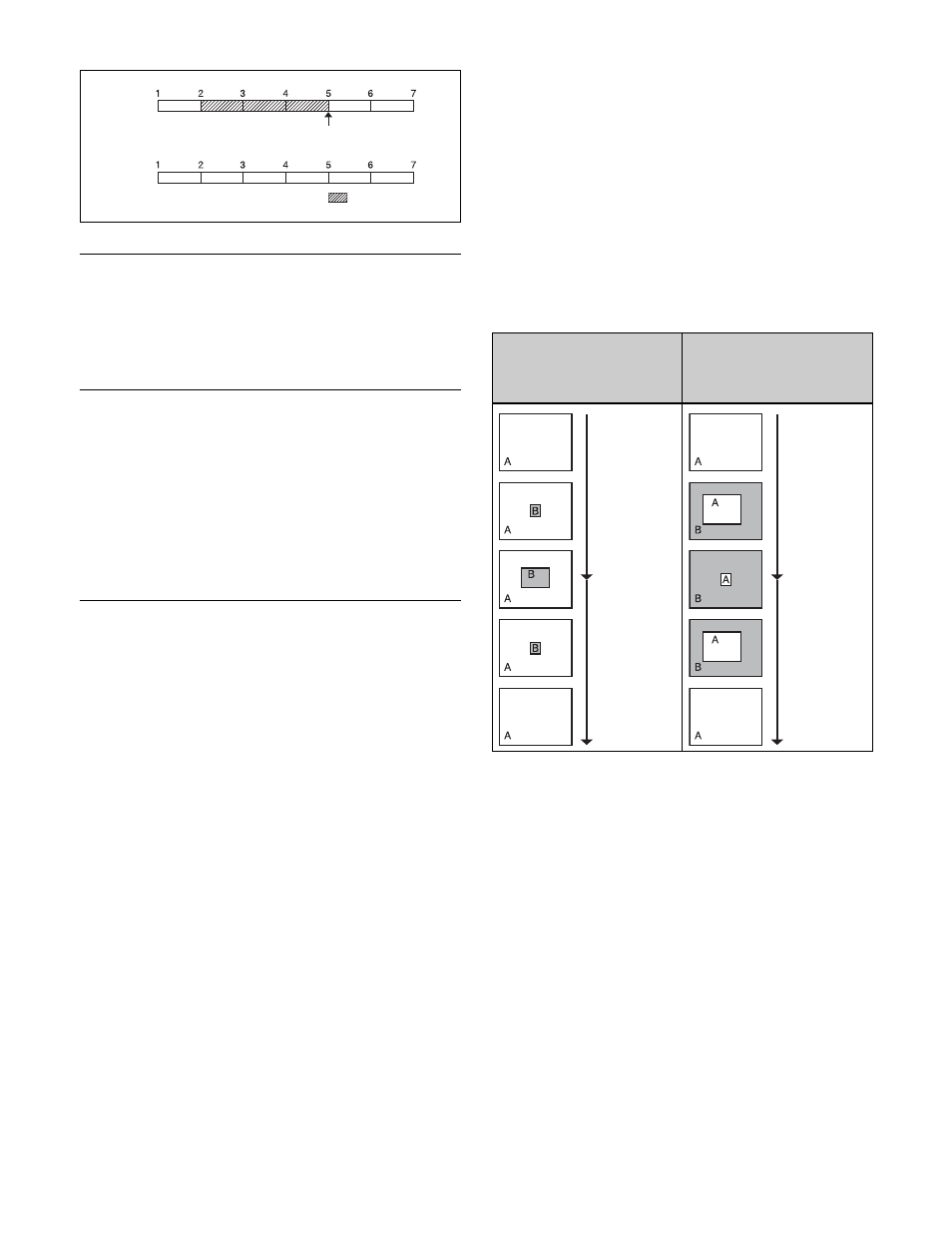Programmable dme, Undoing an edit operation, Duration mode setting – Sony GP-X1EM Grip Extension User Manual
Page 315: Transition mode settings for user programmable dme

315
Undoing an Edit Operation
To undo a keyframe insert, modify, delete, or paste
operation immediately after execution, press the [UNDO]
button.
Duration Mode Setting
There are two keyframe duration modes: variable duration
mode, and constant duration mode in which the effect
duration is fixed
• To select variable duration mode, press the [CONST
DUR] button, turning it dark blue.
• To select constant duration mode, press the [CONST
DUR] button, turning it orange.
Transition Mode Settings for User
Programmable DME
To create an effect for user programmable DME, it is
necessary to set the transition mode.
User programmable DME transition mode
For the transition mode set when creating a keyframe
effect for a user programmable DME pattern, the
following can be used.
Single:
Single transition mode
Flip tumble (Flip Tumble):
Flip tumble transition mode
Dual:
Dual transition mode
Picture-in-picture (P in P):
1-channel and 2-channel
picture-in-picture transition mode
Compress:
A type of picture-in-picture, in which the new
image is the background, and the currently visible
image shrinks, and then expands to its original size
.
Frame in-out (Frame I/O):
1-channel or 2-channel,
frame in-out transition mode. When the first transition
completes, if you move the position of the image, you
can move it both horizontally and vertically
Frame in-out H (Frame I/O H):
A type of frame in-out,
which is specified when creating a transition effect in
the horizontal direction. The image movement is
reflected at both the transition start point and end point
.
The operation is carried out according to DME wipe
patterns 1202, 1203, or 1204.
Frame in-out V (Frame I/O V):
A type of frame in-out,
which is specified when creating a transition effect in
the vertical direction. The image movement is
reflected at both the transition start point and end point
.
Transition mode “Compress”
The change in the image when the transition mode is set to
“Compress” is as follows, in comparison to the case of
“Picture-in-picture.”
Transition mode “Frame in-out”
In this mode, when the first transition has completed, you
can move the image with the positioner in both horizontal
and vertical directions, but the image position at the
transition start point and end point does not change.
The description is of an example of creating an effect such
as the following.
Before
deletion
After
deletion
: Loop range
Deletion
Example of the image
change in the transition
mode “Picture-in-picture”
(1-channel mode)
Example of the image
change in the transition
mode “Compress”
First stroke
Second stroke
First stroke
Second stroke